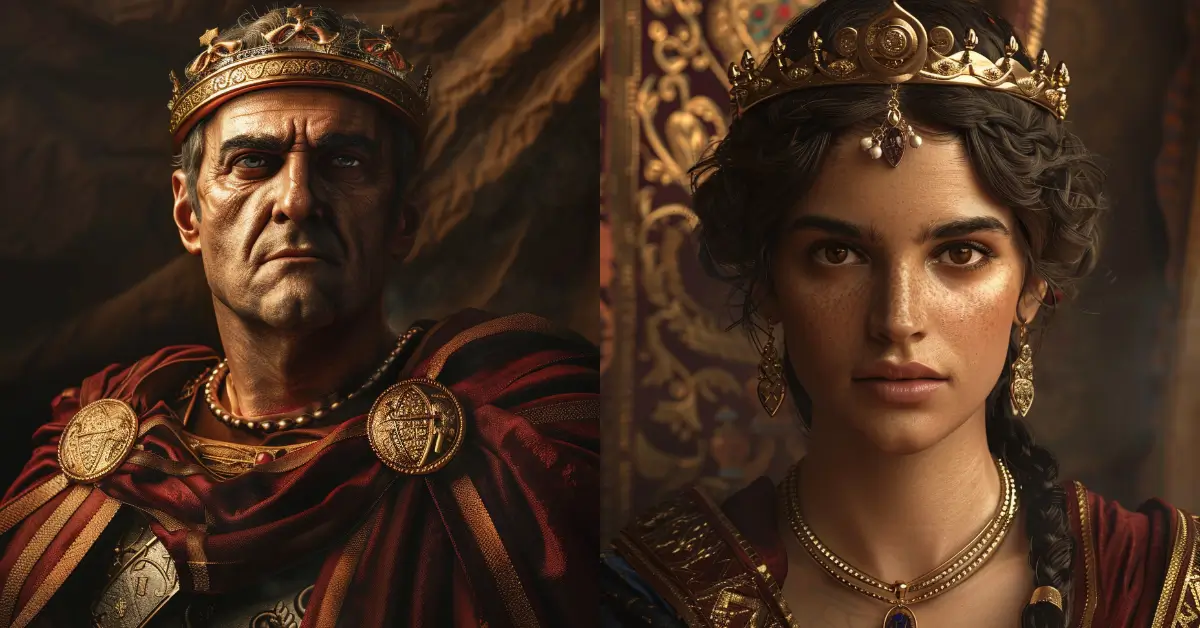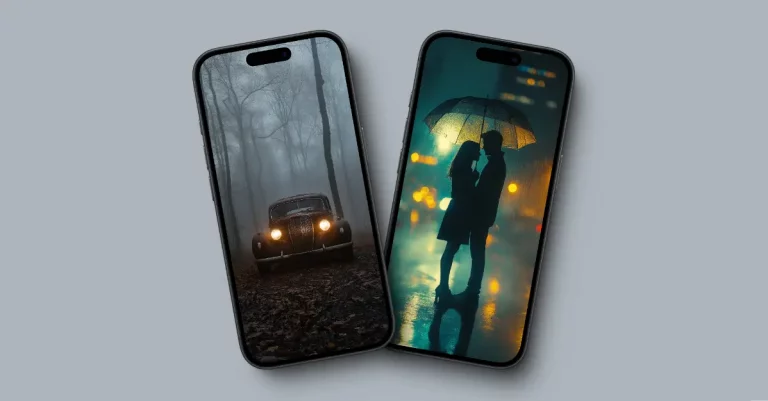AI-Generated Portraits of Historical Rulers: A Fun Experiment
I’ve always been captivated by the stories of powerful rulers who shaped the course of human civilization. Their lives, decisions, and legacies have left an indelible mark on our collective memory.
I am already familiar with Midjourney, an AI tool that generates realistic images from textual descriptions. This gave me an idea for a fun experiment: What if I could create portraits of famous historical rulers using AI?
The thought of seeing these iconic figures come to life through the lens of modern technology was thrilling. I knew I had to give it a try. In this blog post, I’ll take you through my journey of creating AI-generated portraits of 15 renowned rulers from various eras and regions.
But before we begin, I want to make one thing clear: This experiment is purely for entertainment purposes. While I’ve tried to maintain historical accuracy in my descriptions, the final images may not be entirely faithful to reality. AI, as powerful as it is, has its limitations and can sometimes produce unexpected results.
So, let’s approach this with a sense of curiosity and fun. If you’re interested in learning more about these historical figures, I encourage you to consult reliable sources and read their biographies. My goal here is simply to provide a unique and engaging way to connect with history.
Are you ready to see some of the most powerful people in history through the eyes of AI? Let’s get started!
The Process
Creating AI-generated portraits of historical rulers was an exciting challenge. I wanted to strike a balance between historical accuracy and artistic flair, while also letting the AI’s creativity shine through. Here’s how I went about it:
First, I compiled a list of 15 famous rulers from various eras and regions. From ancient Egypt’s Cleopatra to India’s Ashoka the Great, I tried to cover a diverse range of figures who left their mark on history.
Next, I crafted detailed prompts for each ruler. This was the most critical part of the process. I had to provide the AI with enough information to create a realistic and historically accurate portrait, while also leaving room for interpretation.
In my prompts, I included key details such as the ruler’s name, title, and the time period in which they lived. I also described their clothing, accessories, and any other distinguishing features that would help the AI generate a faithful representation.
To add an extra layer of depth and drama, I used phrases like “realistic,” “highly detailed,” and “cinematic lighting.” I wanted the portraits to have a sense of grandeur and intensity befitting these powerful historical figures.
Once I had my prompts ready, it was time to feed them into Midjourney. This is where the magic happens. The AI tool analyzes the textual descriptions and generates images based on its understanding of the words and phrases.
After generating several images for each ruler, I selected the ones that best captured their essence and historical accuracy. I was amazed at the level of detail and realism the AI was able to achieve.
But I also had to keep in mind that these portraits are ultimately a product of algorithms and data. They are not meant to replace historical research or authentic representations. Rather, they are a fun and engaging way to connect with the past and spark our imaginations.
With the process behind us, let’s take a look at the prompts and results for each of the 15 rulers!
Prompts and Results
Alexander the Great
Prompt: Portrait of Alexander the Great, the King of Macedon, realistic, highly detailed, cinematic lighting, epic, dramatic, historical accuracy, 4th century BCE Greek clothing and armor –ar 3:4
Alexander the Great (356-323 BCE) was a legendary king of Macedon who conquered vast territories stretching from Greece to India. He is widely regarded as one of the greatest military commanders in history.
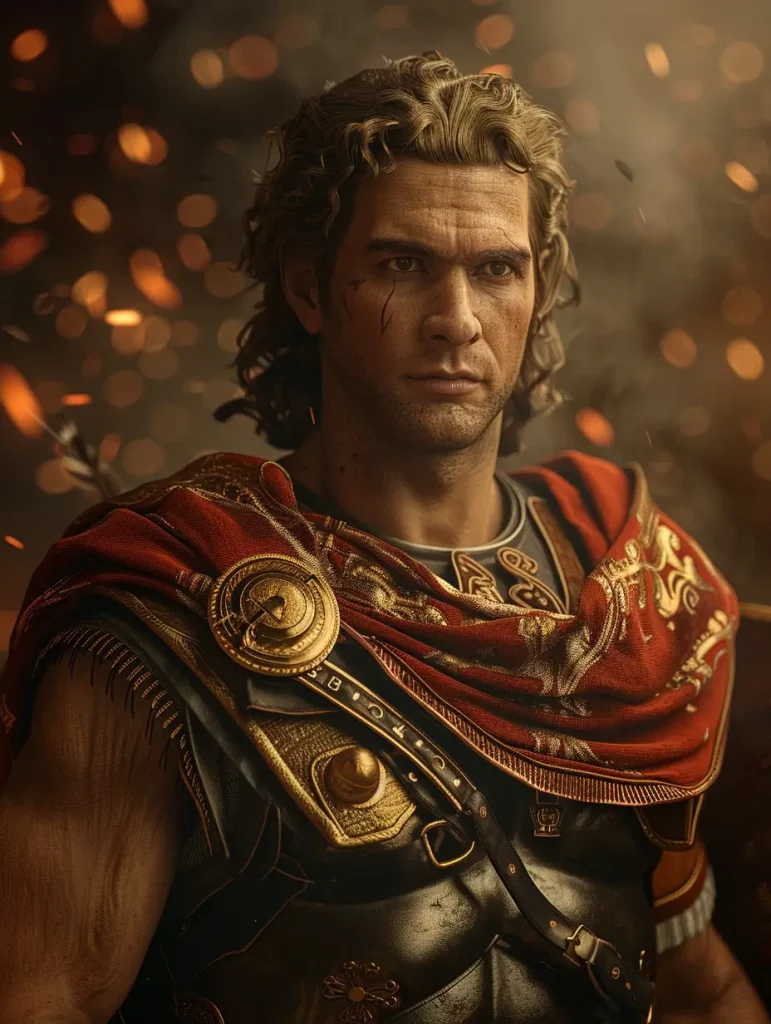
Cleopatra VII
Prompt: Portrait of Cleopatra VII, the Queen of Egypt, realistic, highly detailed, cinematic lighting, epic, dramatic, historical accuracy, 1st century BCE Egyptian clothing and accessories –ar 3:4
Cleopatra VII (69-30 BCE) was the last active ruler of the Ptolemaic Kingdom of Egypt. She is known for her intelligence, political acumen, and alliances with Julius Caesar and Mark Antony.
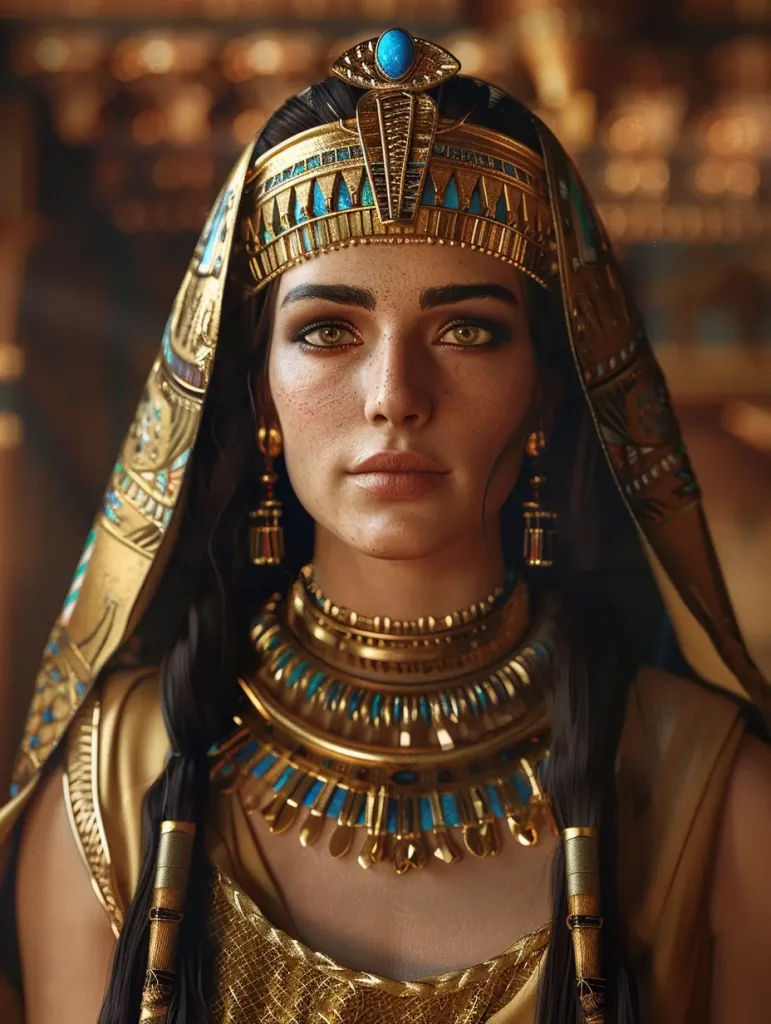
Qin Shi Huang
Prompt: Portrait of Qin Shi Huang, the First Emperor of China, realistic, highly detailed, cinematic lighting, epic, dramatic, historical accuracy, 3rd century BCE Chinese imperial clothing and accessories –ar 3:4
Qin Shi Huang (259-210 BCE) was the founder of the Qin dynasty and the first emperor of a unified China. He is famous for his military conquests, standardization of Chinese script and currency, and the construction of the Great Wall of China.
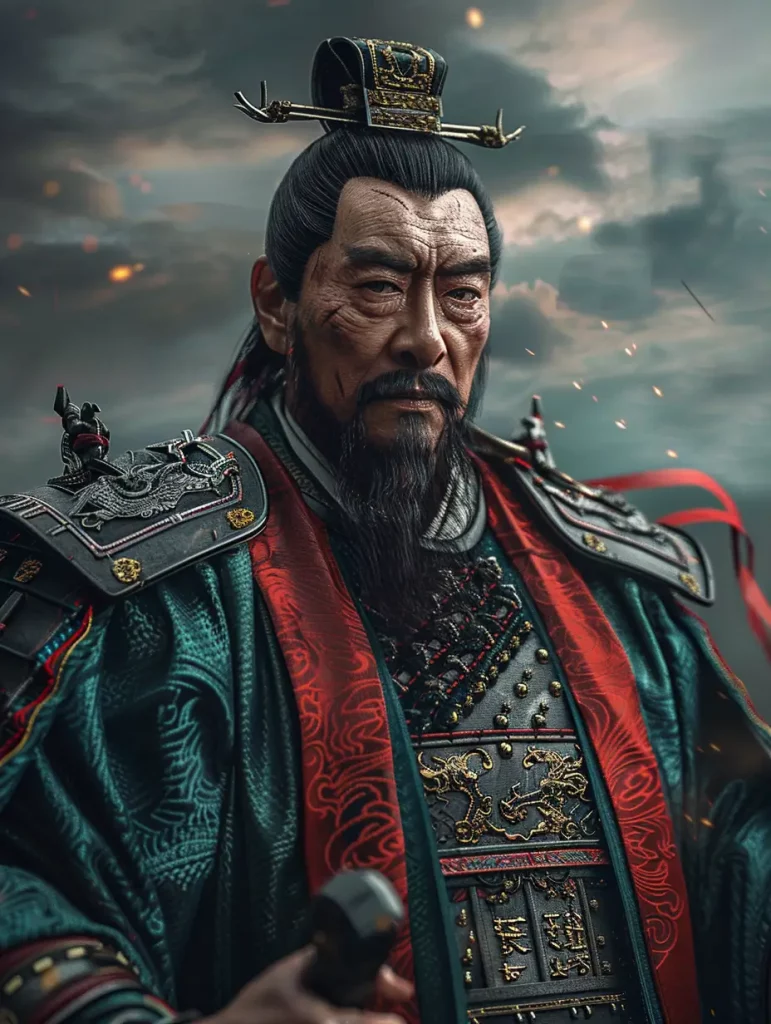
Cyrus the Great
Prompt: Portrait of Cyrus the Great, the Founder of the Persian Empire, realistic, highly detailed, cinematic lighting, epic, dramatic, historical accuracy, 6th century BCE Persian royal clothing and crown –ar 3:4
Cyrus the Great (c. 600-530 BCE) was the founder of the Achaemenid Empire, also known as the First Persian Empire. He is renowned for his military victories, political reforms, and tolerant policies towards conquered peoples.

Ashoka the Great
Prompt: Portrait of Ashoka the Great, the Emperor of the Maurya Dynasty in India, realistic, highly detailed, cinematic lighting, epic, dramatic, historical accuracy, 3rd century BCE Indian royal clothing and jewelry –ar 3:4
Ashoka the Great (c. 304-232 BCE) was an Indian emperor of the Maurya Dynasty who ruled over most of the Indian subcontinent. He is known for his conversion to Buddhism, his promotion of nonviolence, and his efforts to spread Buddhist teachings.
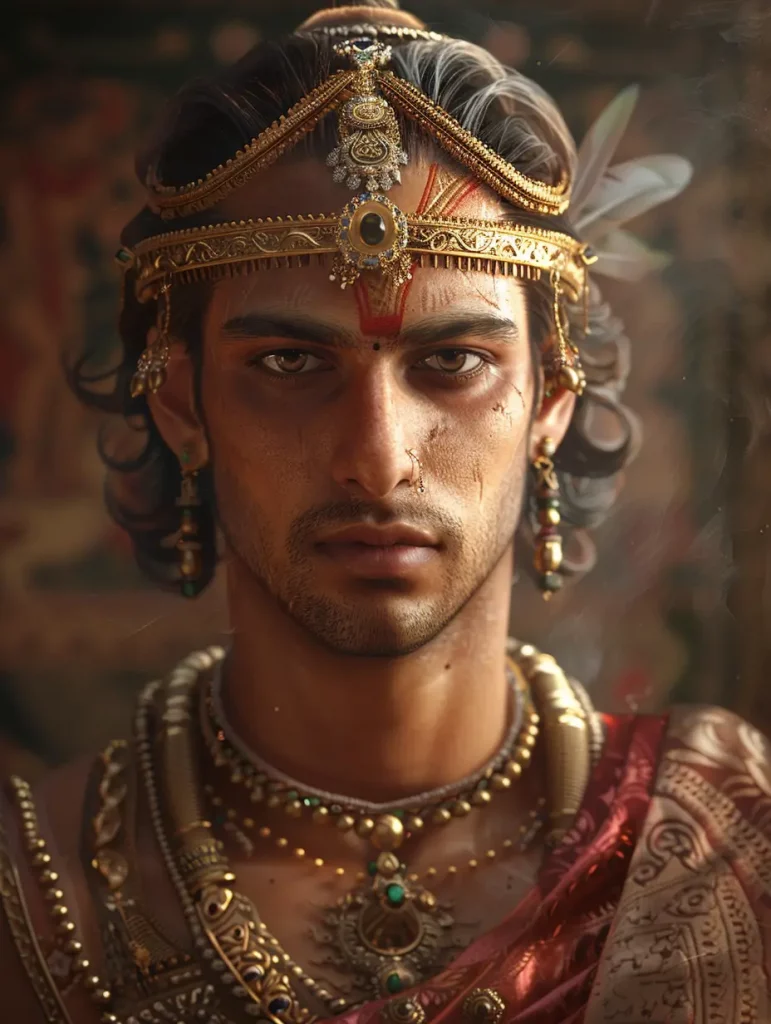
Genghis Khan
Prompt: Portrait of Genghis Khan, the Founder of the Mongol Empire, realistic, highly detailed, cinematic lighting, epic, dramatic, historical accuracy, 12th-13th century Mongolian clothing and armor –ar 3:4
Genghis Khan (c. 1162-1227) was the founder and first Great Khan of the Mongol Empire. He united the nomadic tribes of Northeast Asia and launched a series of invasions that led to the creation of the largest contiguous empire in history.
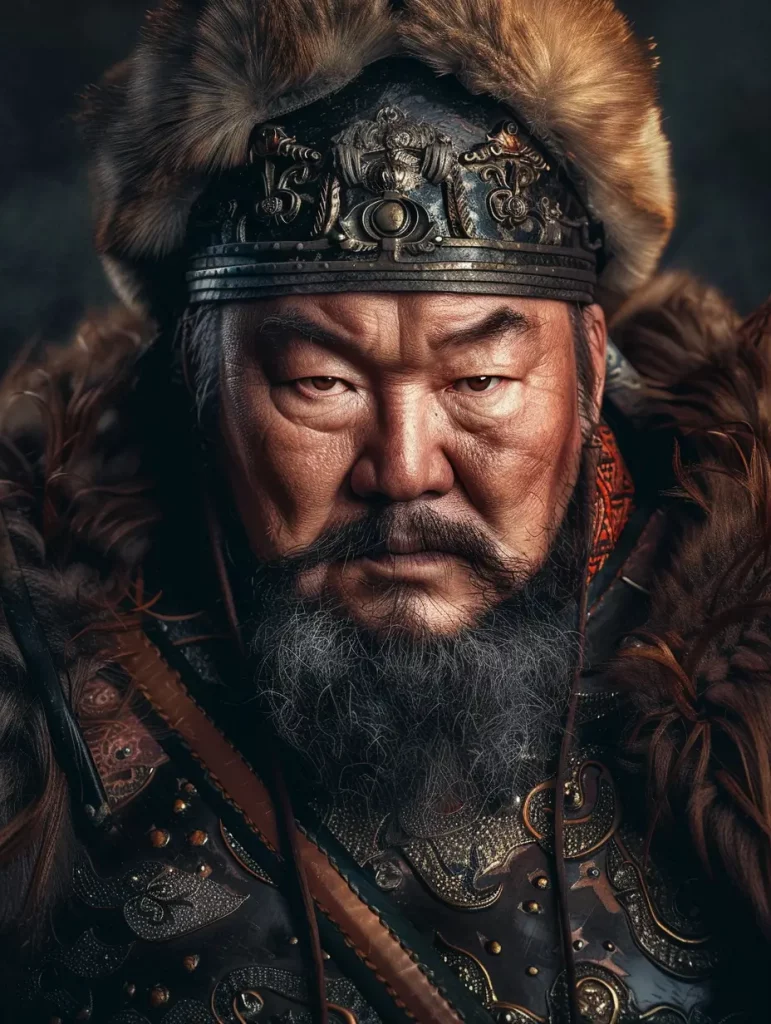
Constantine the Great
Prompt: Portrait of Constantine the Great, the Roman Emperor, realistic, highly detailed, cinematic lighting, epic, dramatic, historical accuracy, 4th century Roman imperial clothing and crown –ar 3:4
Constantine the Great (c. 272-337) was a Roman emperor who is best known for his conversion to Christianity and his role in the legalization and spread of the religion throughout the Roman Empire. He also founded the city of Constantinople, which served as the capital of the Eastern Roman Empire for over a thousand years.

Wu Zetian
Prompt: Portrait of Wu Zetian, the Empress of China during the Tang Dynasty, realistic, highly detailed, cinematic lighting, epic, dramatic, historical accuracy, 7th-8th century Chinese imperial clothing and accessories –ar 3:4
Wu Zetian (624-705) was the only female emperor in the history of China. She ruled during the Tang Dynasty and is known for her political acumen, patronage of the arts, and efforts to improve the lives of peasants and women.
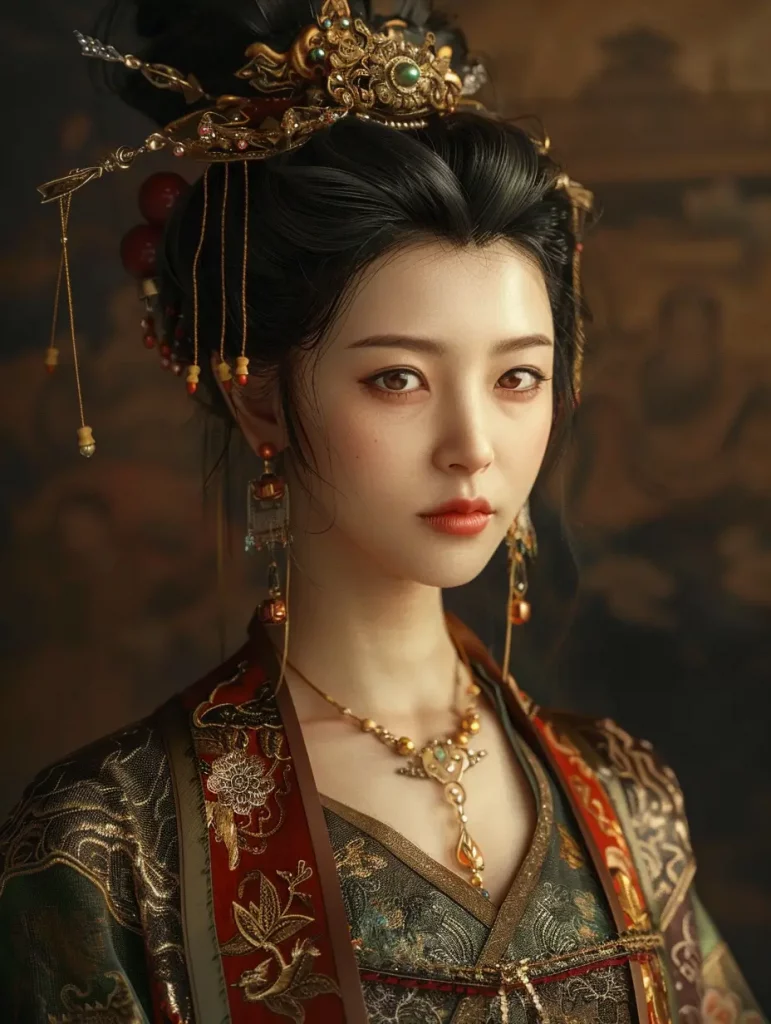
Suleiman the Magnificent
Prompt: Portrait of Suleiman the Magnificent, the Ottoman Sultan, realistic, highly detailed, cinematic lighting, epic, dramatic, historical accuracy, 16th century Ottoman imperial clothing and turban –ar 3:4
Suleiman the Magnificent (1494-1566) was the longest-reigning Sultan of the Ottoman Empire. He is known for his military conquests, legal reforms, and patronage of the arts and architecture.
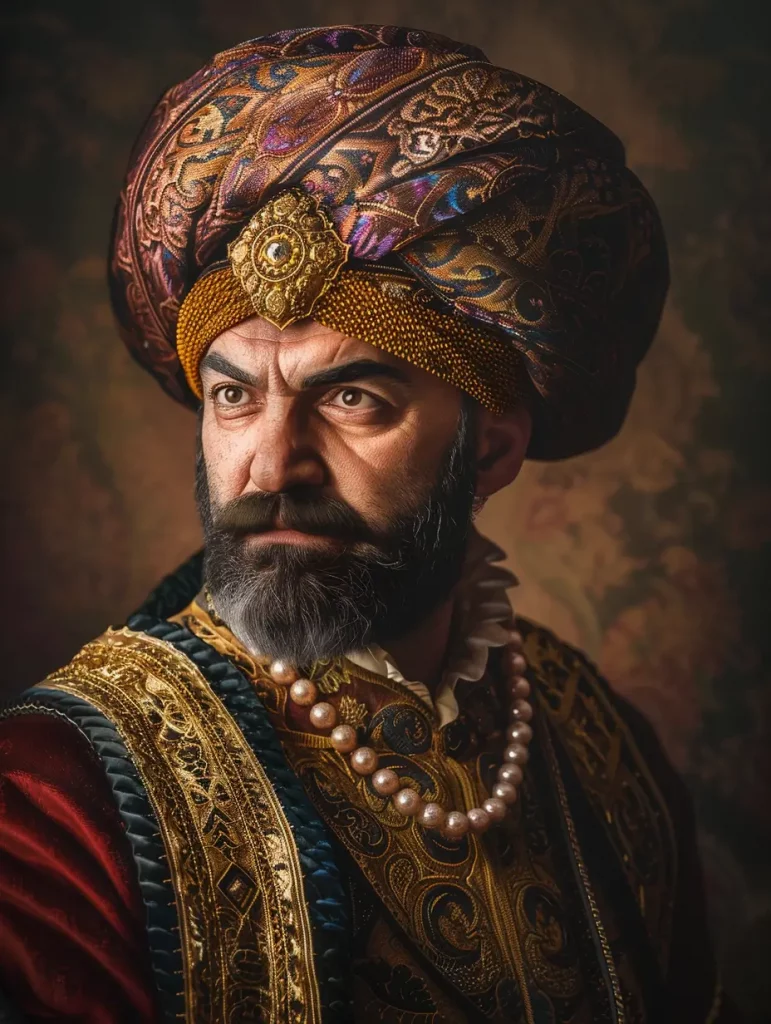
Marcus Aurelius
Prompt: Portrait of Marcus Aurelius, the Roman Emperor and Stoic philosopher, realistic, highly detailed, cinematic lighting, epic, dramatic, historical accuracy, 2nd century Roman imperial clothing and beard –ar 3:4
Marcus Aurelius (121-180) was a Roman emperor and Stoic philosopher. He is best known for his philosophical work “Meditations,” which remains a classic of Stoic philosophy.

Boudicca
Prompt: Portrait of Boudicca, the Queen of the British Celtic Iceni tribe, realistic, highly detailed, cinematic lighting, epic, dramatic, historical accuracy, 1st century Celtic clothing and armor –ar 3:4
Boudicca (d. 60/61 CE) was a queen of the British Celtic Iceni tribe who led a major uprising against the occupying forces of the Roman Empire. She is remembered as a symbol of British resistance against foreign invaders.
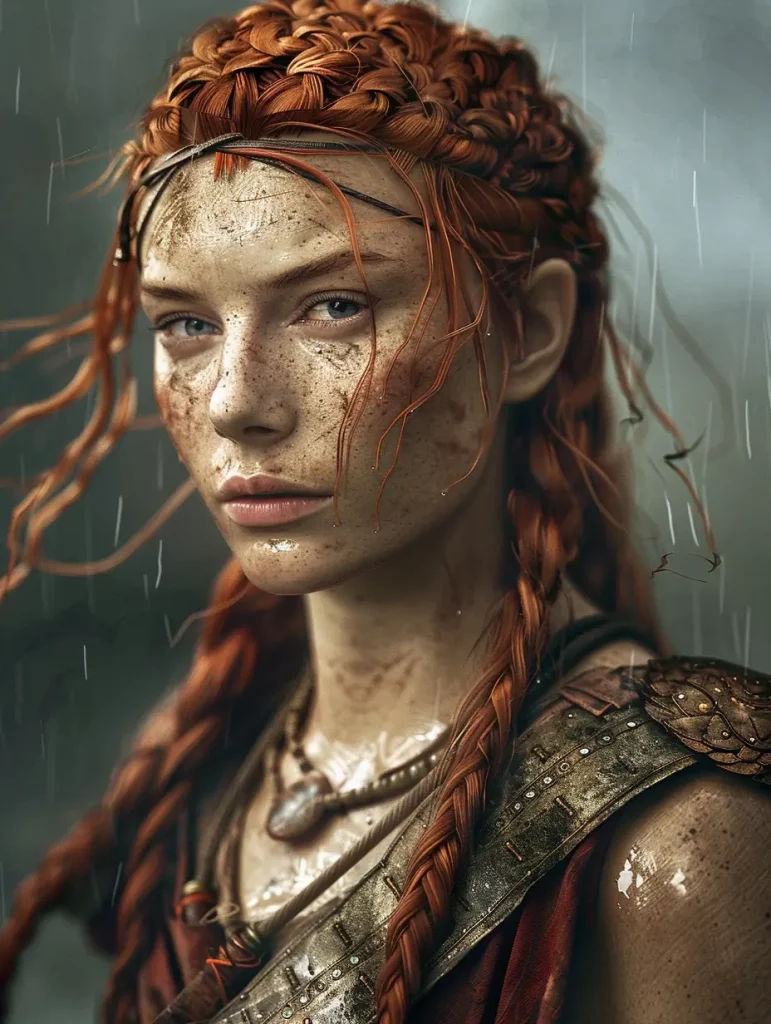
Julius Caesar
Prompt: Portrait of Julius Caesar, the Roman statesman and general, realistic, highly detailed, cinematic lighting, epic, dramatic, historical accuracy, 1st century BCE Roman clothing and armor –ar 3:4
Julius Caesar (100-44 BCE) was a Roman statesman, general, and author who played a critical role in the transformation of the Roman Republic into the Roman Empire. He is known for his military victories, political reforms, and assassination.
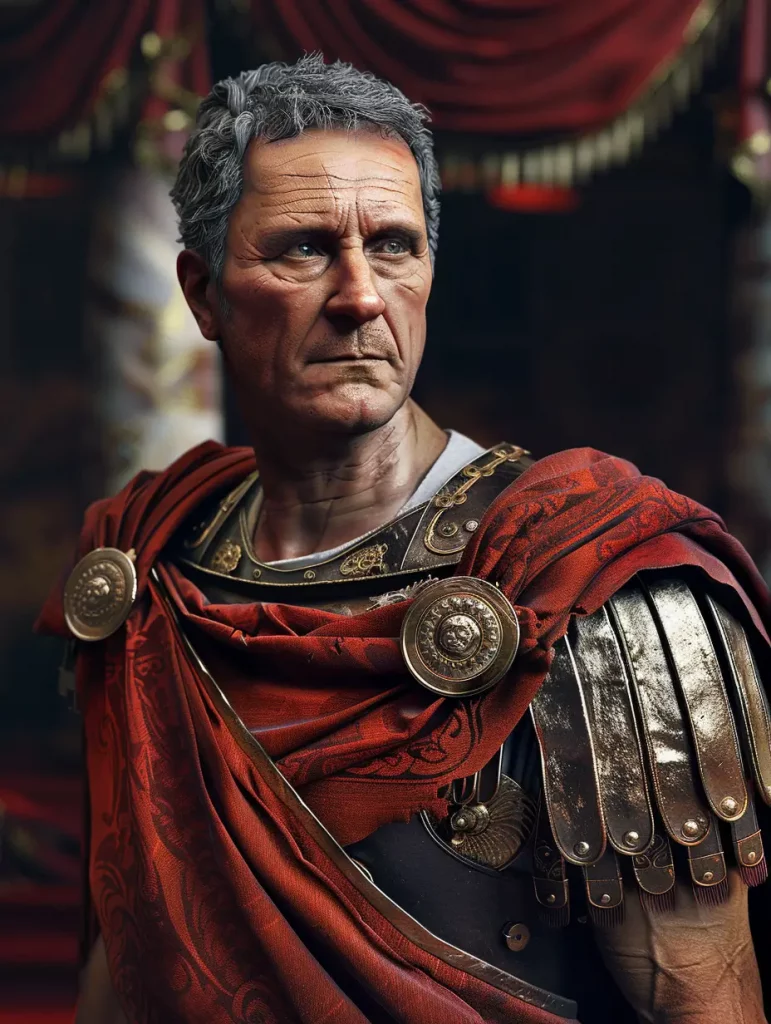
Hammurabi
Prompt: Portrait of Hammurabi, the King of Babylon, realistic, highly detailed, cinematic lighting, epic, dramatic, historical accuracy, 18th century BCE Babylonian royal clothing and headdress –ar 3:4
Hammurabi (c. 1810-1750 BCE) was the sixth king of the First Babylonian Dynasty. He is best known for his legal code, the Code of Hammurabi, which is one of the earliest and most complete written legal codes in the world.

Zenobia
Prompt: Portrait of Zenobia, the Queen of the Palmyrene Empire, realistic, highly detailed, cinematic lighting, epic, dramatic, historical accuracy, 3rd century Palmyrene royal clothing and crown –ar 3:4
Zenobia (240-c. 274 CE) was the queen of the Palmyrene Empire, which broke away from the Roman Empire during the Crisis of the Third Century. She is known for her military prowess, political acumen, and patronage of the arts and sciences.

Akbar the Great
Prompt: Portrait of Akbar the Great, the Mughal Emperor, realistic, highly detailed, cinematic lighting, epic, dramatic, historical accuracy, 16th century Mughal imperial clothing and turban –ar 3:4
Akbar the Great (1542-1605) was the third Mughal Emperor, who reigned from 1556 to 1605. He is known for his military conquests, religious tolerance, and patronage of the arts and sciences. Under his rule, the Mughal Empire became one of the largest and most powerful empires in the world.
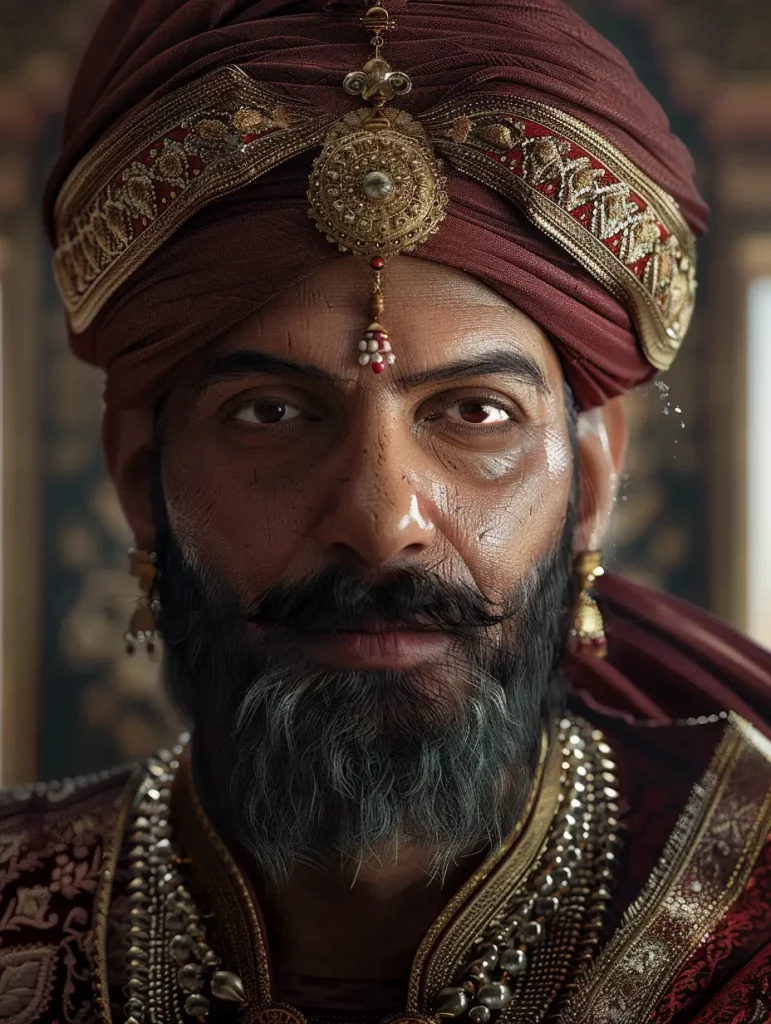
Through this experiment, I’ve gained a deeper appreciation for the power of AI and its potential to create stunning visual content. The portraits generated by Midjourney are not only realistic but also imbued with a sense of drama and grandeur that befits these towering figures from history.
At the same time, I’ve also come to understand the limitations of AI and the importance of human input and interpretation. While the portraits are impressive, they are ultimately the product of algorithms and data. They cannot replace the depth and nuance of historical research and authentic representations.
That being said, I believe that AI-generated content like these portraits can serve as a valuable tool for engaging people with history. They can spark curiosity, inspire imagination, and encourage further exploration into the lives and times of these fascinating rulers.
As I look back on this experiment, I’m struck by the diversity and richness of human history. From ancient Babylon to imperial China, from the Roman Empire to the Mughal dynasty, these 15 rulers represent a tapestry of cultures, beliefs, and ways of life.
By bringing them to life through AI-generated portraits, I hope to have shed new light on their stories and made them more accessible to a wider audience. If even one person is inspired to learn more about these figures and their impact on the world, then I consider this experiment a success.
Thank you for joining me on this journey through time and technology. I hope you’ve enjoyed these portraits as much as I enjoyed creating them. Until next time, keep exploring, keep learning, and keep marveling at the wonders of our shared history.
